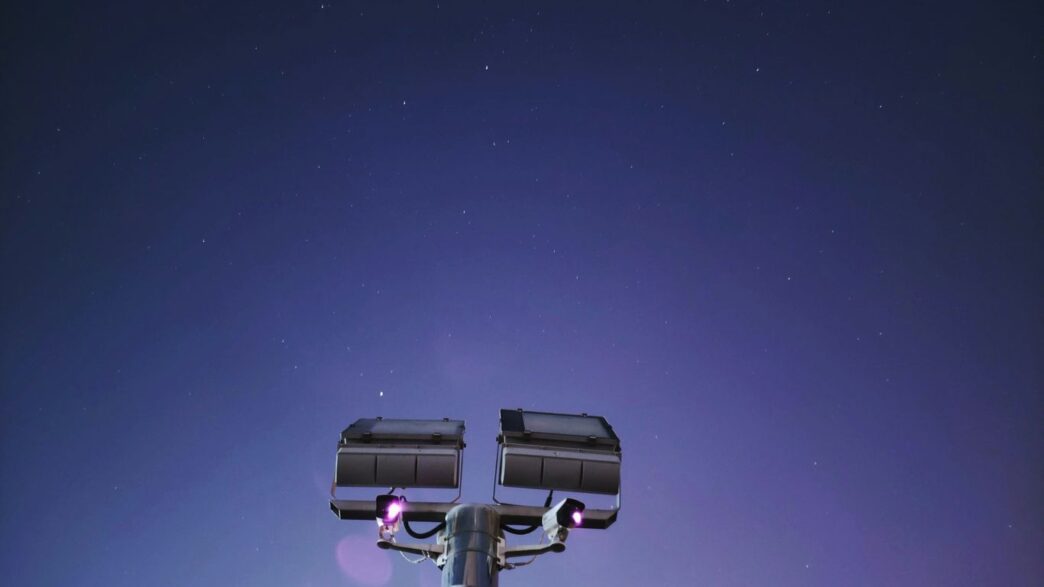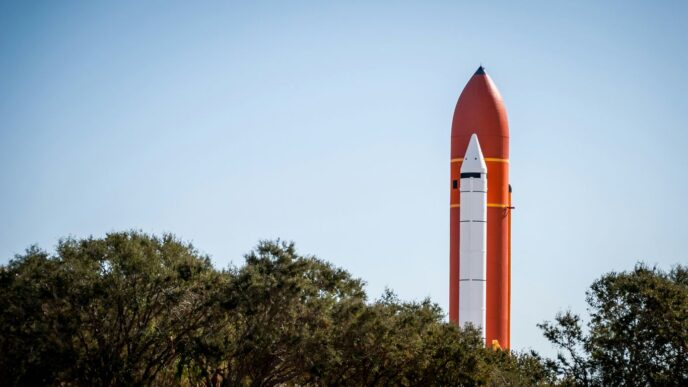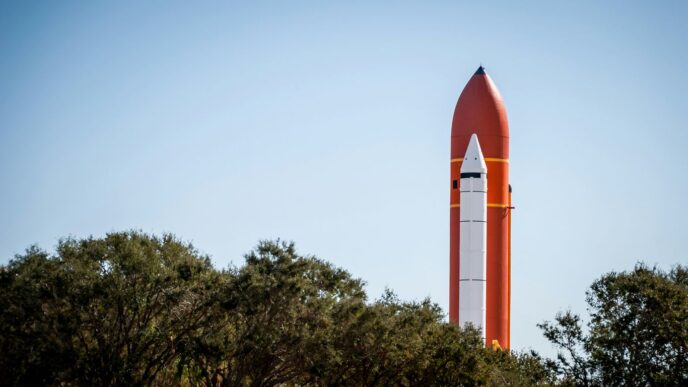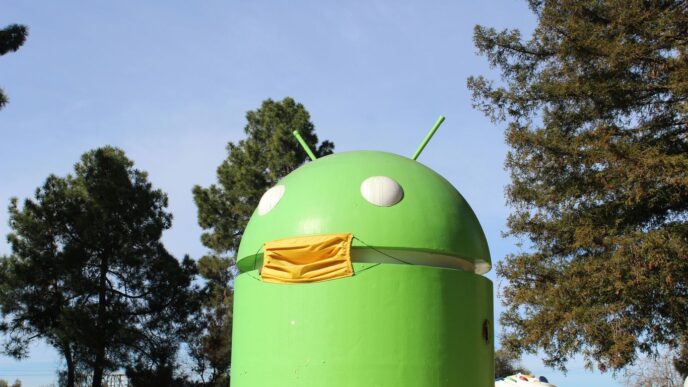Looking up at the night sky can be pretty amazing, right? There’s just so much out there to see. But sometimes, figuring out what’s what can be a challenge. That’s where the best apps for stargazing come in. They’re like having a personal guide right in your pocket, helping you spot planets, stars, and constellations. Whether you’re just curious or a total space nerd, these apps can make looking at the stars way more interesting. We’ve rounded up some of the top picks for 2025 to help you get the most out of your next clear night.
Key Takeaways
- The best apps for stargazing turn your phone into a map of the night sky, making it easy to identify celestial objects.
- Features often include augmented reality (AR) overlays, detailed information about stars and planets, and event calendars.
- Some apps are great for beginners, offering simple interfaces, while others cater to serious astronomers with vast databases and telescope control.
- Astrophotographers can find apps that help plan the perfect shot of the night sky.
- Many of the best apps for stargazing offer free versions or affordable upgrades, with some even working offline.
1. SkySafari 7 Pro
If you’re really serious about stargazing, or even astrophotography, SkySafari 7 Pro is probably the app you’ve been looking for. It’s not the cheapest option out there, but honestly, the amount of detail and features packed into this app makes it worth the price. Think of it as having a portable observatory in your pocket. It boasts a massive database, with millions of stars and galaxies, and it can even sync up with your telescope if you have a compatible one, like a Celestron StarSense. This means you can control your telescope right from your phone, which is pretty neat.
One of the standout features for me is the Observing Planner. It lets you pick what you want to see – maybe a specific type of nebula or a distant galaxy – and then it helps you figure out the best time and place to see it from your location. It’s also got a ‘Tonight’s Best’ feature that highlights what’s most interesting in the sky on any given night. This is super helpful for planning out your viewing sessions or even your next astrophotography project.
Here’s a quick look at what makes it stand out:
- Massive Database: Over 100 million stars and 3 million galaxies.
- Telescope Control: Works with certain computerized telescopes.
- Observing Planner: Detailed planning tools for finding celestial objects.
- Augmented Reality (AR): Overlay star charts onto your live camera view.
It does take up a good chunk of space on your device, and there’s a bit of a learning curve to get the most out of all its functions, but for anyone wanting to go beyond just casual sky-watching, SkySafari 7 Pro is a top-tier choice. It really brings the universe to your fingertips.
2. PhotoPills
If you’re serious about taking amazing photos of the night sky, PhotoPills is pretty much a must-have. It’s not really for just casually looking up at the stars, but if you want to plan out that perfect shot of the Milky Way or catch a specific celestial event, this app is where it’s at. Think of it as a super-powered planner, calculator, and celestial map all rolled into one.
PhotoPills really shines when you want to photograph things like the Milky Way lining up with a cool landmark, or maybe a galaxy setting behind an old castle. The app helps you figure out the best date, time, and even the exact spot to be. It can even suggest what lens to use and help you dial in your camera settings.
Here are some of the cool things it can do:
- Plan your shots: Use the 2D Map-Centric Planner to see where celestial objects will be.
- Visualize in AR: The Augmented Reality modes let you see the sky in front of you with overlays showing the sun, moon, and stars’ paths.
- Calculate everything: It has calculators for things like the Golden Hour, Blue Hour, and even how to capture star trails.
- Track eclipses: You can see where and when solar and lunar eclipses will happen, and the best places to view them.
It does have a bit of a learning curve because there are so many features, and it’s not the cheapest app out there. But if you’re aiming to capture those once-in-a-lifetime night sky photos, PhotoPills is a tool that can really help you nail it.
3. Night Sky 11
Night Sky 11 is a really neat app, but it’s only for Apple folks – sorry, Android users, you’ll have to look elsewhere. It works great on iPhones and iPads, and there’s even a version for the Apple Vision Pro. If you’ve got an Apple device, you’ll find this app pretty handy for checking out the stars.
Just point your phone at the sky, and the app will tell you what you’re looking at, whether it’s a star, a constellation, or a galaxy. It’s got some cool augmented reality (AR) features that make identifying things easier. There’s an info button next to everything, and tapping it gives you a little description. You can also use its 360-degree view to see what constellations would be visible from anywhere else on Earth, even if you’re pointing your phone at the ground.
One fun thing is that you can use it inside your house, and it’ll project the night sky onto your ceiling. If you decide to subscribe to the ‘Plus’ version, you get access to something called Planetary Portals. It’s like stepping through a doorway to see the sky from a different angle, which is pretty neat.
Most of the basic stuff is free, but if you want to see a massive 1.7 billion stars or use some of the more advanced tools, you’ll need to upgrade. They do let you try out the Plus version for a month, though, so you can see if it’s worth it before you pay.
- Exclusive to iOS and Apple devices.
- Augmented Reality (AR) features for easy identification.
- 360-degree sky view and ceiling projection.
- Optional ‘Plus’ subscription for advanced features and more stars.
4. NASA App

Okay, so the NASA App. Now, this one is a bit different from the others on our list. It’s not exactly your go-to for pointing your phone at the sky and instantly identifying constellations, but honestly, it’s still a must-have if you’re even a little bit curious about space. Think of it more as a direct line to everything NASA is doing.
You get a constant stream of the latest news, mission updates, and some seriously stunning images straight from the source. It’s like having a front-row seat to space exploration. Plus, they’ve got this cool NASA+ video streaming service now, which is pretty neat for catching documentaries or live events. It’s also great for keeping tabs on the International Space Station (ISS). You can actually set it up to get alerts before it flies over your location, which is a fun little thing to do on a clear night.
Here’s what you can expect:
- Loads of Images and Videos: Get access to thousands of high-resolution photos and videos from NASA missions. You can even download wallpapers for your phone or tablet.
- Mission Updates: Stay in the loop with what NASA is up to, from rocket launches to deep space discoveries.
- ISS Tracking: Get notifications for when the International Space Station will be visible from your area.
- NASA TV and Podcasts: Stream NASA TV live or catch up on your favorite NASA podcasts right within the app.
It’s completely free, which is always a bonus, and the interface is pretty straightforward. While it might not have all the fancy augmented reality stargazing features of some other apps, its strength lies in providing direct, up-to-date information from NASA itself. It’s a fantastic educational tool for all ages, really sparking that sense of wonder about the cosmos. You can find out more about the latest NASA missions and what they’re discovering.
5. Stellarium Mobile Plus
Stellarium Mobile Plus is a really solid choice if you’re looking for a super realistic view of the night sky. It’s built on the same foundation as the popular open-source desktop planetarium, so you know it’s got some serious cred. This app boasts an incredibly vast database, featuring over 1.69 billion stars, all the known planets, and even comets, plus millions of nebulas and galaxies. It uses your phone’s GPS to show you exactly what’s overhead in real-time, which is pretty neat. You can also connect it to your telescope if you’re into that, though serious astrophotographers might find other apps a bit more specialized for their needs.
One of the coolest things it does is let you jump forward in time. Want to see what the sky will look like later tonight or on a specific date? Stellarium Mobile Plus can show you. It can get a little glitchy if you mess with the time too much, but it’s a fun feature nonetheless. The visuals are great, with high-definition photos of the moon, nebulas, and galaxies that you can zoom right into. It’s a good option for beginners, but also has enough depth for those who want to learn more.
Here’s a quick look at what it offers:
- Massive Celestial Database: Billions of stars, planets, comets, nebulas, and galaxies.
- Real-time Sky Map: Uses your phone’s GPS to show you what’s visible right now.
- Telescope Control: Connects via Bluetooth or Wi-Fi for guided observation.
- Time Travel Feature: See the sky at different times and dates.
- High-Definition Imagery: Zoom in on detailed photos of deep-sky objects.
6. Star Walk 2
If you’re just starting out with looking at the stars, Star Walk 2 is a really solid choice. It’s designed to be super easy to use, which is a big plus when you’re trying to figure out what’s what up there. You just point your phone at the sky, and bam, it tells you what you’re seeing. It’s got a pretty big database, with over 200,000 stars and a bunch of planets and satellites.
One of the cool things is the augmented reality feature. It overlays constellations and planets right onto your view of the sky, making it easier to connect the dots, so to speak. Plus, there’s a ‘Visible Tonight’ function that helps you plan ahead, showing you what’s coming up in the night sky. This is handy if you want to catch a specific planet or constellation.
Star Walk 2 also has some neat filters, like x-ray and gamma-ray, which let you see celestial objects in ways you normally wouldn’t. It’s not as complex as some of the super-advanced apps, but for getting started and learning the basics without feeling overwhelmed, it’s a great pick. You can explore thousands of stars and other celestial bodies with this app. It’s a winner of the Apple Design Award, so you know it’s pretty well-made. You can get the Star Walk 2 Plus version for even more features.
7. SkyView
SkyView is a pretty straightforward app that makes looking up at the night sky super easy for just about anyone. You just point your phone or tablet at the sky, and bam, it tells you what you’re seeing – stars, planets, constellations, even satellites like the International Space Station. It’s been around for a while and has a ton of downloads, which makes sense because it’s really good at what it does without being complicated.
One of the cool things is how it uses augmented reality. It overlays the names and information right onto your camera view, which is neat. Plus, it has a night mode that keeps things easy on your eyes in the dark. What’s also handy is that it doesn’t need Wi-Fi or a data signal to work, so you can take it pretty much anywhere you go to escape the city lights. It even has a feature called Sky Path that lets you track where objects will be in the sky at different times, and you can even travel through time to see what the sky looked like in the past or will look like in the future. It’s a solid choice if you just want to quickly identify things without a lot of fuss.
8. Star Chart
If you’re just dipping your toes into the world of stargazing and don’t want to spend a fortune, Star Chart is a really solid choice. It’s free, which is a big plus, and it does a surprisingly good job of showing you what’s up there. The app uses your phone’s GPS to point out stars, constellations, and planets in real time. It’s pretty neat.
One of the standout features is the ‘Time Shift’ function. This lets you rewind or fast-forward through celestial events, going back 10,000 years or looking ahead. It’s handy for seeing how things change over time. You can also tap on any star to get basic info like its brightness and distance. While it doesn’t have all the bells and whistles of some paid apps, its simplicity is its strength, especially for beginners. You can also check out Night Sky for a similar user-friendly experience.
Here’s a quick look at what makes Star Chart a good starting point:
- Augmented Reality (AR) Views: The app offers some nice AR visuals, making it feel like you’re really interacting with the sky.
- Beginner Friendly: It’s straightforward to use, so you won’t get bogged down in complicated menus.
- Event Tracking: The built-in calendar helps you keep track of upcoming astronomical events, so you don’t miss out.
Keep in mind that while the core features are free, there are in-app purchases for more detailed information on things like meteor showers or satellites. But for getting a basic understanding of the night sky, Star Chart is a great way to start without any cost.
9. Sky Tonight
Sky Tonight is a pretty neat app, especially if you’re just getting into stargazing or want a straightforward way to learn more about what’s up there. It comes from the same folks who made Star Walk 2, so you know it’s going to look good and be packed with info. When you hold your phone up to the sky, it shows you what you’re looking at, and you can tap on things like stars and planets to get details about them – like their history or when they’ll be visible. It’s a bit of a reading app, so maybe jot down what you see and look up the details later when you’re comfy inside.
One of the coolest things is its planning feature. You can see what’s coming up in the sky each night and even set reminders for big events like eclipses. They also have this ‘stargazing index’ that gives you a percentage score for how good the night will be for viewing, based on sunset, moon phase, and clouds. It’s a really helpful way to know if you should bother setting up your telescope.
There are some ads in the free version, which can be a little annoying, so you might want to consider the paid version to get rid of them and unlock more features. It also only works in portrait mode, which is a bit of a bummer if you prefer landscape. But overall, it’s a solid, user-friendly app with nice AR effects and a ton of information.
10. Google Sky
Google Sky is a pretty neat tool if you want to explore space without leaving your couch. It lets you see the universe through the lenses of famous telescopes like Hubble, and also from big sky surveys. You can look at the sky in different light types, like X-ray or infrared, which is kind of wild to think about.
It’s available on your phone or computer, and it’s free. You can click around to learn about planets, star groups, and other space stuff.
Here’s what you can do with it:
- See views of the universe in X-ray, ultraviolet, and infrared.
- Look at drawings of the sky from a long time ago.
- Find planets by just typing their name into the search bar.
It’s a good way to get a feel for what’s out there, especially if you’re just starting to get interested in space.
Your Cosmic Adventure Awaits
So there you have it! With these apps, the universe is pretty much at your fingertips. Whether you’re just starting out and want to know what that bright star is, or you’re trying to plan the perfect shot of the Milky Way, there’s an app for that. They really do make looking up at the night sky so much more interesting. Grab one, step outside on a clear night, and see what you can find. You might be surprised at how much there is to see, even without a fancy telescope. Happy stargazing!
Frequently Asked Questions
What is a stargazing app?
Stargazing apps are like having a map of the sky right on your phone! They help you find and learn about stars, planets, and constellations just by pointing your device up at the night sky. It’s a super easy way to explore space without needing a big telescope.
Do I need a telescope to use these apps?
Nope, not at all! These apps are designed to work with your phone’s camera and GPS. They’re perfect for looking at the sky with just your eyes, though some apps can even help you control a telescope if you have one.
Are stargazing apps good for beginners?
Absolutely! Many stargazing apps are made with beginners in mind. They have simple instructions, cool visuals, and help you identify everything you see, making it fun and easy to start learning about space.
Can I use these apps when it’s cloudy?
While you can’t see the stars through clouds, many apps have features that let you explore the sky even indoors. You can still learn about constellations, planets, and upcoming celestial events, or even use a ‘time machine’ feature to see what the sky will look like later.
Are there free stargazing apps?
Yes, there are several great free stargazing apps available! While some have extra features if you pay, the free versions usually offer a lot of fun and useful tools for exploring the night sky.
What’s the best way to use a stargazing app?
The best way is to go outside on a clear night, away from bright lights if possible. Open your app, point your phone towards the sky, and let it guide you. It’s like a treasure hunt for the stars!














